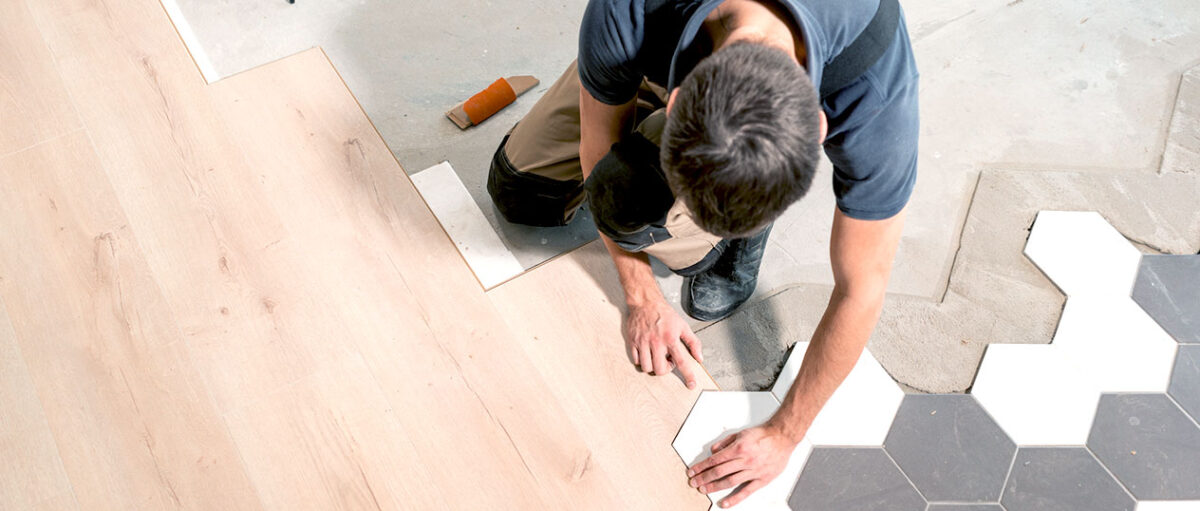Refinancing your home loan is a common way to secure a new interest rate, but that’s not the only reason to consider a refi. It’s also how many homeowners fund home upgrades like new flooring, landscaping, and even structural changes. When it comes to refinances for home improvements, you’ve got options. Let’s explore them!
5 types of refinances for home improvement
- Cash-out refinance
- FHA 203(k)
- CHOICERenovation® and CHOICEReno eXPress®
- HomeStyle® Renovation
- EasyPath Renovation
After we break down these top five types of refinances for home improvements, we’ll go over how to determine the best fit for your goals.
Cash-out refinance
A cash-out refinance* is not officially a renovation refinance. You can use the cash-out funds from your home equity however you see fit. But, many homeowners choose this type of refinance with the intention of using the cash out of their home equity to finance home improvements.
*Using your home equity to pay off debts or make other purchases does not eliminate the debt or the cost of the purchases, but rather increases the loan amount of your mortgage to be paid according to your new mortgage terms.
FHA 203(k)
From complete structural changes to minor home renovations, FHA 203(k) programs allow you to finance home rehab costs and your mortgage in one convenient loan. Backed by the Federal Housing Administration, FHA 203(k) loans offer Standard and Limited options. The right one for you depends on the scope of your planned home improvements.
FHA 203(k) Standard
- Structural changes allowed
- $5K minimum, no maximum repair amount
- Landscaping and hardscaping allowed
- 180-day maximum completion time
- Manufactured homes allowed
- HUD consultant required
FHA 203(k) Limited
- Minor remodeling allowed
- No minimum, maximum $35K repair amount
- Landscaping and hardscaping not allowed
- 180-day maximum completion time
- Manufactured homes allowed
- HUD consultant not required
CHOICERenovation® and CHOICEReno eXPress®
Freddie Mac’s CHOICERenovation is a mortgage that allows you to include your renovation costs in your home loan balance. CHOICEReno eXPress is essentially the same program, but for smaller-scale upgrades. What makes these two refinance options different from FHA (203)k Standard and Limited loans is that they’re not backed by any government entity. They are Conventional loans. That means different lenders may have different qualifying criteria.
HomeStyle® Renovation
Fannie Mae’s HomeStyle Renovation is another Conventional refinance option to fund your home upgrades. It functions similarly to a CHOICERenovation loan, but you can combine it with other Fannie Mae products like HomeStyle Energy (designed for home improvements intended to conserve energy, cut utility costs, and increase the home’s resilience against natural disasters) and HomeReady (designed for low-income borrowers).
EasyPath Renovation
EasyPath Renovation is a program that allows you to roll your mortgage and renovation costs together, without having to hire a contractor or make big purchases on your credit card. Designed for home updates completed through major retailers like The Home Depot, Lowe’s, and Menards, EasyPath can be used with Conventional renovation mortgages like CHOICERenovation and CHOICEReno eXPress. It’s important to note that EasyPath itself is not a mortgage, it works with your renovation home loan to help you maximize the benefits.
EasyPath highlights
- Loan amount can be based on the projected value of the home after renovations
- Leverage the same interest rate as the home loan instead of your credit card
- Cardinal makes 100% payment to the retail store to purchase and install the project
- Fixed and adjustable rates available
How do I know which refinance for home improvements is right for me?
Like any big financial decision, there are a lot of factors to consider before committing to a renovation refi. Some of those will be unique to you, but here are a few key questions to ask yourself to narrow down your financing options.
What’s the scale of my planned renovations?
As we covered in this blog, different refinance mortgages are designed for different types of home projects. If you’ve got smaller updates in mind (like fresh paint, new floors, or new appliances), a loan like CHOICEReno eXPress is likely a better fit than CHOICERenovation or vice versa. Some loans, like HomeStyle Energy, are created for very specific types of updates. So, if you’ve got specialized renovations in mind, there might just be a niche loan for that.
How much equity do I have in my home?
Your home equity is what your home is worth in the current real estate market, minus the amount owed on your home loan. If your equity is high, a cash-out refinance is a popular way to leverage that equity. Plus, you can use any funds left over after renovations however you see fit.
What’s my credit score?
The importance of your credit score doesn’t diminish after buying your home. When you refinance, it still impacts the rates you can get and which refinance loans you can qualify for. If your credit score is higher, Conventional renovation loans might offer more competitive rates. If you’re still building your credit score, government-backed options like FHA 203(k) could offer you the flexibility you need.
At the end of the day (and this blog), the right mortgage lender should provide all the guidance you need to decide on the best way to fund your home renovations. So, don’t stress too much about having all the answers before you start the process. You’ve got this!
Rates aren’t the only reason to refi. It’s also a great way to fund home upgrades like new flooring, landscaping, and even structural changes.





